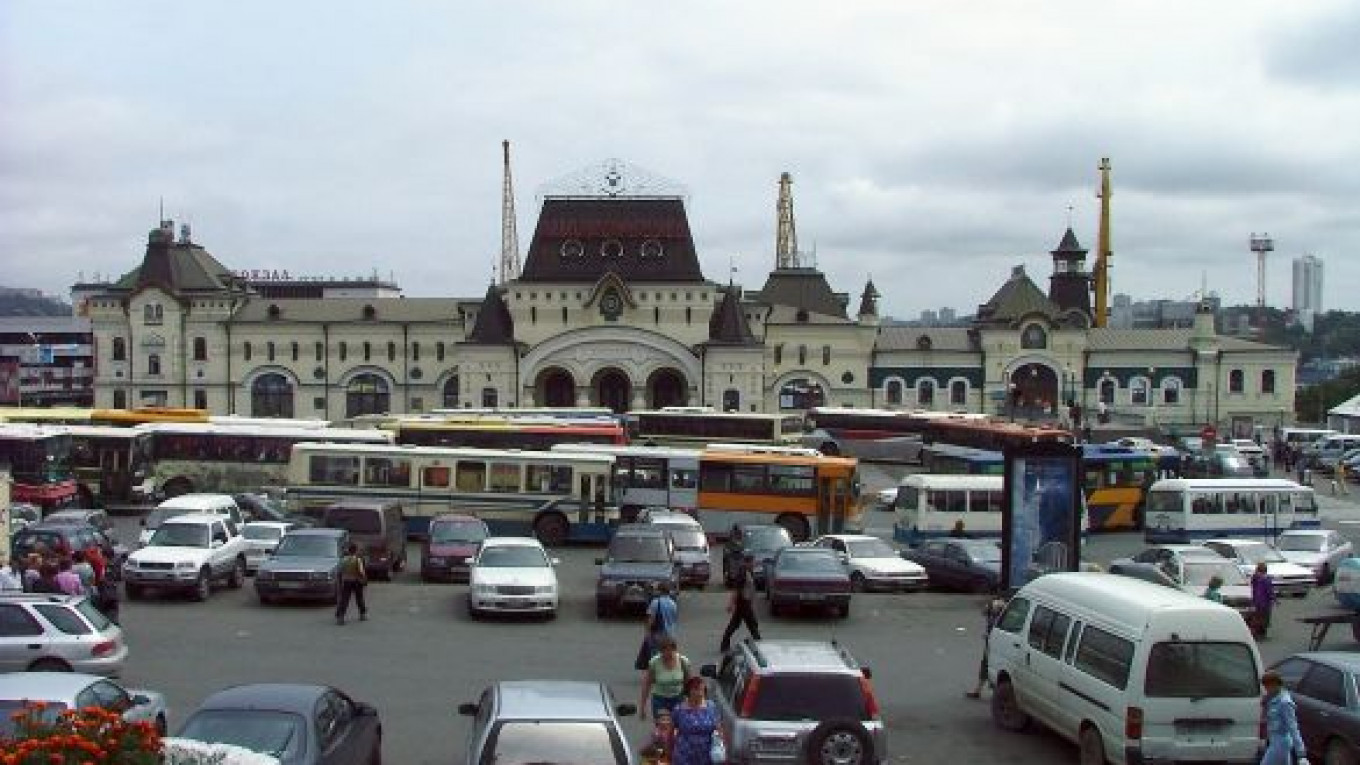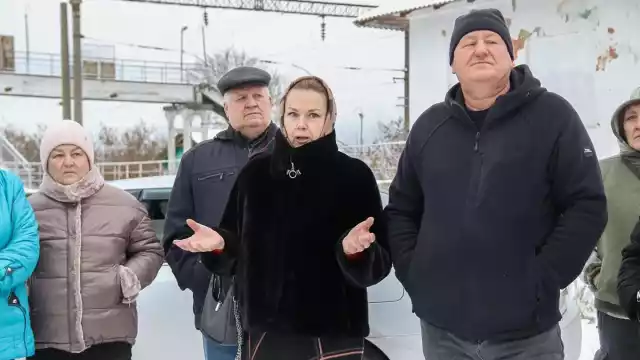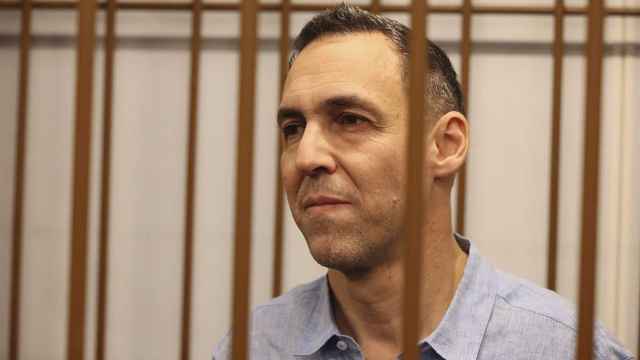David Bowie, Paulo Coelho and Alexander Solzhenitsyn are very different in life and in art, but they have one thing in common. They all traveled on the Trans-Siberian Railroad — the iron artery that has brought freight and passengers across the country since it was first completed in 1916.
Now, the classic mainline will see complete refurbishment under a multibillion-dollar government plan to improve infrastructure, which was announced by President Vladimir Putin at the St. Petersburg Economic Forum at the end of June.
Though a rail tunnel to America is not yet agreed on, Russia has a plan and some of the funding to refurbish the Trans-Siberian Railroad.
He said the state would unseal the National Welfare Fund to allocate 450 billion rubles ($13.6 billion) on three infrastructure projects, including the construction of a high-speed rail line from Moscow to Kazan, a Central Ring Road beltway that is to appear around the capital by 2020 and the modernization of the Trans Siberian Railroad and its tributary, the Baikal-Amur Mainline.
The Trans-Siberian today is not only a means of travel for bold writers, musicians and ordinary people, it is a major route for transporting goods and resources from Russia's Far East to the capital, and part of a vital link between Europe and Asia.
"A direct rail link across Eurasia will become the main transportation artery between Europe and the Asia-Pacific region," Putin said at the forum. "This will give a powerful boost to development for Siberia and the Far East," he added.
Across Permafrost
The Trans-Siberian railroad starts in Moscow and goes across the whole country, passing through major cities like Ekaterinburg, Tyumen, Omsk, Novosibirsk, Krasnoyarsk, going through Irkutsk south of Lake Baikal to Khabarovsk and Vladivostok. It is the main rail line in the eastern part of the country, capable of handling 120 million tons of freight per year.
Another legendary railway in Siberia is the Baikal-Amur Mainline, or BAM. A notorious Soviet construction project, it begins by linking to the Trans-Siberian line between Krasnoyarsk and Irkutsk at small junction called Taishet and runs north of Lake Baikal parallel to the Trans-Siberian before arriving at the Pacific Ocean port of Sovetskaya Gavan.
Completed in 1984 after a decade of heroic construction by communist volunteers from all over the U.S.S.R who worked in the harsh climate with no benefits of civilization, the route virtually stopped operating only eight years later due to a lack of freight.
After the completion of gigantic 15-kilometer Severomuisky Tunnel in northwestern Buryatia in 2003, which made it possible to transport heavy-load trains along the route, the BAM tracks began to come to life, but still the freight volumes were far less than required for it to bring any revenue. Today, only 16 million tons per year can be transported via the BAM.
The situation started to change recently as the government created a strategy of railroad development that envisages the BAM taking on heavy freight trains carrying natural resources like coal, minerals, lumber and oil extracted from nearby regions, while the Trans-Siberian line would be used mainly for fast passenger trains and containers filled with various consumer products.
The freight capacity of both lines is insufficient to accomplish this goal. The Trans-Siberian, for instance, is overloaded already.
According to the Institute of Natural Monopolies Research, or IPEM, more than 20 sections measuring 3,500 kilometers in total of Trans-Siberian and BAM have deficiencies in transport capacity. As with vehicular roads, overloading, insufficient space on sidings and junctions create traffic jams for rail transportation, which means the speed of delivery decreases significantly.
"If the infrastructure of these lines does not see any development, by 2020 the volume of freight backlogs will on average reach 86 million tons per year," said Pavel Tereshko, an analyst with IPEM.
This means that cargo equaling the weight of 260 Empire State Buildings could be held up in rail traffic jams.
A Jack In The Box
The initial plan, approved by the Cabinet in April, envisaged that a total of 560 billion rubles would be necessary to increase the capacity of the Trans-Siberian and the BAM by 50 million tons per year.
Out of this sum, 360 billion rubles was to go to the BAM and 200 billion rubles to the Trans-Siberian. The National Welfare Fund would provide a total of 260 billion rubles, and the remaining 300 billion rubles were to come from the investment program of Russian Railways.
At the St. Petersburg Economic Forum at the end of June, President Vladimir Putin said money from the National Welfare Fund would be spent to modernize both the Trans-Siberian and BAM, but later the Baikal-Amur line disappeared from Putin's to-do list. This decision actually involves the government allocating only 200 billion rubles in total for modernization of the Trans-Siberian Railroad, a source at Russian Railways told Kommersant last month. This means that the hope for a new lease on life for the BAM is shrinking.
Meanwhile, the government has not excluded the idea that private investors could also take part in these projects.
"I know that the interest of private investors in infrastructure projects is very high, especially if the state is ready to provide guarantees, minimize the risks and be a co-investor," Putin said, without naming particular investors.
But the return on investment period is uncertain. For the BAM, experts say that, taking into account the complex geography as well as harsh climate conditions in its vicinity, modernization of the railroad will cost dearly, which means that it would take a long time before revenues could be recovered.
"The rate of return on investments for the Trans-Siberian modernization project is, on the contrary, within reasonable time limits because it has a large share of highly profitable freight types," Tereshko said, adding, however, that even for this line quick profits are unlikely.
By Train From Moscow to Washington
While the future of the Trans-Siberian and BAM is unclear, another mega-project that could result in a rail link appearing across continents continues to be discussed.
Since the beginning of the 20th century, Russia and the United States have been holding talks on possible joint efforts to build a railway tunnel under the Bering Strait to join Chukotka Peninsula in Russia and Seward Peninsula in the state of Alaska.
During the Asia-Pacific Economic Cooperation Forum last year, Russian Railways president Vladimir Yakunin said the project to extend a railway line to Kamchatka and then to build a tunnel across the Bering Strait could be completed "in not a very distant future." He also said at another conference last year that the final decision to start the project could be made within 3 to 5 years.
The strategy of railroad development up to the year 2030 approved by the Russian government mentions the Bering tunnel, but the plans state that it could be built after 2030.
The difficulty is not only in digging the tunnel itself, which could be from 98 to 113 kilometers long, but also in creating links to the tunnel from existing rail lines in Russia, the U.S. and Canada.
In Russia, the Bering tunnel is meant to eventually connect to the Trans-Siberian and BAM and would require about 4,000 kilometers of rail lines to be built from Yakutsk. In the U.S. and Canada, about 2,000 kilometers of track would need to be laid from the tunnel's landing point to the existing rail connection at Fort Nelson, Canada, going through Fairbanks, Alaska.
There are no exact figures on the total cost of the project. Estimates vary from $35 billion to as much as $100 billion.
As with other infrastructure projects, private investors are more than welcome. Moreover, in 2007, then-Transportation Minister Igor Levitin said state funds would not be available to build the tunnel at all, and it should be constructed using only private investment, if business found such a project attractive.
Economic Development Ministry officials said earlier that it would take about 12 years to complete the project and another 15 years after that before it started to generate profit.
But Fyodor Soloview, the head of Interbering, a private company created to promote Bering tunnel construction, said it could be built as a separate project.
"The tunnel could start to be built first, using money provided by international development funds. The railroads connecting it to mainlines in Russia, the U.S. and Canada would then follow and could be laid on the gravel dug out from the seabed," he said.
Soloview also said that if investment was not first made in the tunnel, it could take another generation before railroads came both from Alaska and Russia to the Bering Strait.
Contact the author at [email protected]
Related articles:
A Message from The Moscow Times:
Dear readers,
We are facing unprecedented challenges. Russia's Prosecutor General's Office has designated The Moscow Times as an "undesirable" organization, criminalizing our work and putting our staff at risk of prosecution. This follows our earlier unjust labeling as a "foreign agent."
These actions are direct attempts to silence independent journalism in Russia. The authorities claim our work "discredits the decisions of the Russian leadership." We see things differently: we strive to provide accurate, unbiased reporting on Russia.
We, the journalists of The Moscow Times, refuse to be silenced. But to continue our work, we need your help.
Your support, no matter how small, makes a world of difference. If you can, please support us monthly starting from just $2. It's quick to set up, and every contribution makes a significant impact.
By supporting The Moscow Times, you're defending open, independent journalism in the face of repression. Thank you for standing with us.
Remind me later.






